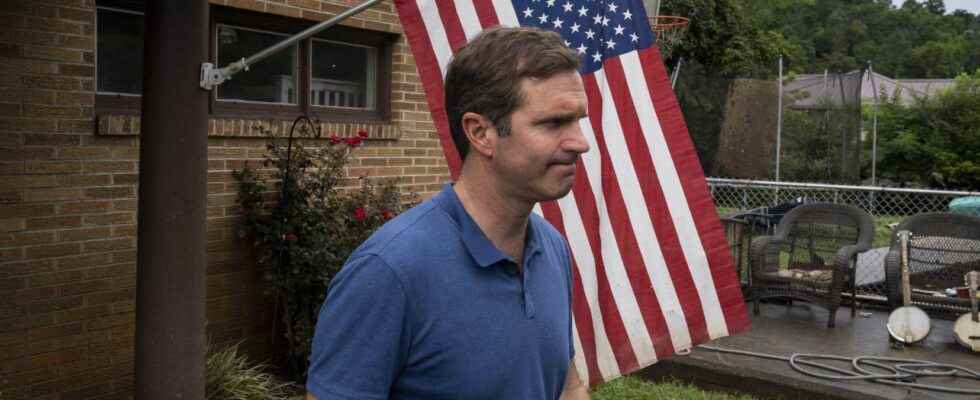The rain that caused the floods that devastated communities in the US mountainous region of Appalachia was losing some steam on Tuesday, but the victims are now preparing to face a new threat: the heat.
“It’s going to be very, very hot, and that’s our new weather challenge,” Kentucky Gov. Andy Beshear said Tuesday morning.
The death toll rose to 37 on Tuesday, after the discovery of new victims the day before. More than 1,300 people were rescued, but rescuers were still trying to reach victims cut off from the world by floods and mudslides.
Hundreds of people are still missing, but the situation is expected to improve when the cellular network is restored and people can start communicating with each other again, the governor said.
“It’s devastating,” Beshear said. It will take years to rebuild. People have nothing. Houses have completely disappeared, we don’t even know where they were. And we continue to find the bodies of our brothers and sisters that we have lost. »
Air-conditioned centers were opened in buildings spared by the floods, when nearly 10,000 people were without electricity in eastern Kentucky, added the governor.
“They opened on time, actually before this heat,” Beshear said. It could be, for the first time, that we are ahead of the weather. »
The governor asked residents cleaning and rebuilding to be cautious of the heat. He announced the dispatch of tanker trucks filled with water to supply those in need.
Elsewhere in the United States, two other bodies have been discovered in northern California, in the area devastated by a massive wildfire, officials said on Tuesday.
The bodies were found by rescuers Monday at two different residences along Route 96 in a remote area near the Oregon border.
The death toll from the biggest wildfire to break out this year in California now stands at four. Two other bodies were found Sunday in a charred vehicle in Klamath River, a small town that was heavily damaged by the McKinney fire.
The flames have destroyed more than 100 homes and other structures since erupting on Friday. The fire has so far incinerated nearly 230 square kilometers of land.
In northwestern Montana, a fire that broke out on Friday encompassed 66 square kilometers on Tuesday and was only 10% contained. Residents were forced to flee on Monday.
The Moose Fire in Idaho destroyed more than 220 square kilometers of the Salmon-Challis National Forest and was 23% contained as of Tuesday. It threatened homes, mining operations and fisheries.
Scientists have warned that climate change has made the West drier and hotter for three decades, and will continue to make the weather more extreme and fires more frequent and more destructive.
The US Forest Service has closed a 175-kilometer section of the famous Pacific Crest Trail in northern California and southern Oregon. About 60 hikers who were in the area were evacuated on Saturday, according to local police.
